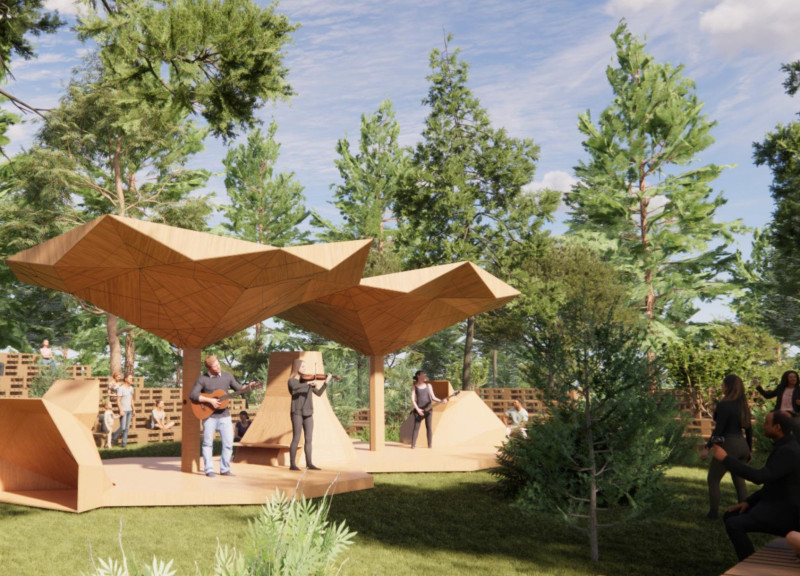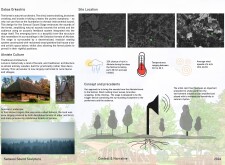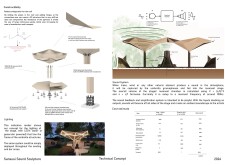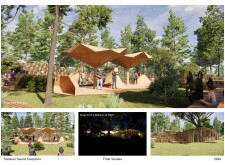5 key facts about this project
### Project Overview
The Sansusi Sound Sculpture is a distinctive architectural initiative located in the Akniste forest of Latvia. Focused on the interplay between sound and nature, this design embodies an exploration of acoustic art in a setting defined by its rich and diverse natural environments. The structure serves dual purposes as both a performance venue and an interactive space, enhancing the auditory experiences provided by the surrounding soundscape.
### Design Philosophy
The project's fundamental concept revolves around utilizing the natural landscape as a dynamic backdrop for artistic expression. It aims to encapsulate and amplify the organic sounds of the forest, such as rustling leaves and flowing water, fostering a sensory connection between participants and their environment. This approach is influenced by artists like Jem Finer, whose work emphasizes the importance of environmental sound, inviting reconsideration of traditional performance spaces and audience engagement.
### Architectural Elements
The design features a dual-stage configuration that prioritizes auditory experiences, partially obstructing visual lines to focus attention on sound. An integrated acoustic feedback system captures and amplifies forest sounds, providing an immersive auditory environment. The seating arrangement employs a modular, decentralized format reminiscent of an amphitheater, enhancing accessibility and circulation. Materials used in construction include reclaimed wooden palettes and lacquered birch plywood, promoting sustainability while harmonizing with the forest setting. The roof's folded structure, made from lacquered birch plywood and galvanized steel, ensures both aesthetic quality and structural stability, accommodating the local climate's variability.






















































